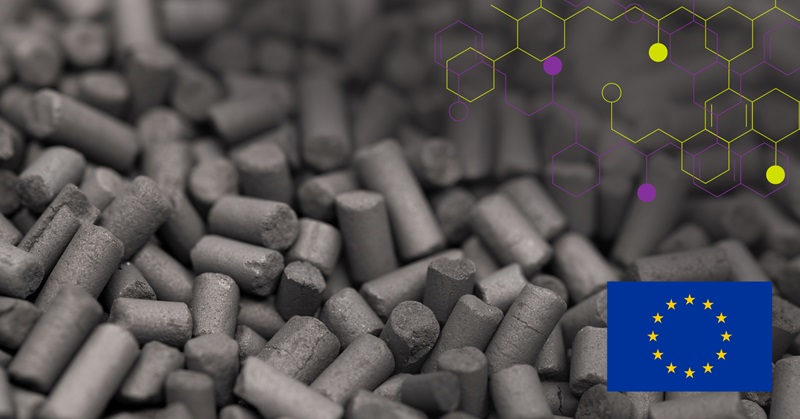Legislation concerning the manufacture of detergents and cleaning products
Manufacturing just about any product these days requires familiarisation with the relevant legislation. Moreover, if using the product involves close contact with people, it is more likely that it will be subject to multiple regulations. The use of chemicals in the manufacture of a product requires, almost without exception, compliance with the REACH (Registration, Evaluation, Authorisation and Restriction of Chemicals) regulation. In addition to REACH, the manufacture of detergents and cleaning products must also comply with the CLP Regulation, the EU Detergent Regulation, the Biocidal Products Regulation and local legislation. There are also a number of voluntary recommendations related to responsibility that should be observed.
Registration, evaluation, authorisation and restriction of chemicals (REACH, EC 1907/2006)
REACH is a groundbreaking piece of EU legislation that entered into force in 2007. REACH is the most comprehensive regulation covering the safe use of chemicals over their entire life cycle, helping to ensure the safe use of chemicals for consumers and end users.
According to REACH, the registration of chemicals is the responsibility of the manufacturer and/or importer. In addition, it is important to note that registration must always be based on up-to-date and reliable data concerning the use of the chemical in question, which requires good communication throughout the entire value chain from the manufacturer of the raw material to the manufacturer of the end product. Manufacturers of detergents and maintenance products, for example, know best about how the end products are used and are therefore best placed to explain what conditions should be taken into consideration during the registration process.
Classification, labelling and packaging (CLP, EU 1272 /2008)
The CLP Regulation is a European Union regulation from 2008 that aligns the European Union system of classification, labelling and packaging of chemical substances and mixtures to the Globally Harmonised System (GHS). CLP creates a framework for the international classification, labelling and packaging of chemicals while ensuring the safety of health and the environment. It complements the REACH Regulation and replaces the Dangerous Substances Directive (67/548/EEC) and the Dangerous Preparations Directive (1999/45/EC).
CLP offers guidelines for classifying chemical substances and mixtures according to their impact on health and the environment. It also provides instructions for labelling and packaging. Warnings must be marked on the product packaging for consumer products, as well as on material safety data sheets for industrial applications.
Most detergents and maintenance products are mixtures, so they must be classified, labelled and packaged in accordance with the CLP Regulation.
The International Association for Soaps, Detergents and Maintenance Products (A.I.S.E.) has created the Detergent Industry Network for CLP Classification for skin and eye effects (DetNet) to help manufacturers classify and label their products in accordance with European legislation. DetNet is a data-sharing network that provides access to shared, robust and up-to-date test data and expertise to help companies, especially SMEs, to derive the appropriate classification and label for their products for skin and eye effects. DetNet helps cleaning and maintenance products manufacturers inform consumers about the actual hazards of the products by enabling a greater differentiation in product classification than the one provided by the calculation method. In this way, classification derived from DetNet will help in recognising hazardous products and handling them safely.
EU detergent regulation (EU 648/2004)
The EU Detergent Regulation has been in force since 2005 and updated regularly since then. The regulation, which aims to ensure health and environmental protection, sets basic conditions for the sales of detergents and surface treatment substances within the EU. According to the regulation, detergents must be biodegradable, as they typically end up in sewers and wastewater treatment plants. The packaging of detergents must also list the ingredients and provide recommended dosages to minimise health risks (including allergic symptoms) and excessive use.
The regulation has been updated to restrict the use of inorganic phosphates in domestic laundry and dishwashing detergents. Accordingly, inorganic phosphates have been banned from laundry detergents since June 2013 and from dishwashing detergents since January 2017.
Biocidal products regulation (BPR, EU NO 528/2012)
In many parts of the world, good hygiene is still a major challenge, and many people die each day due to unclean water, poor hygiene or lack of sanitation. Hygiene standards in Europe are very high, but SARS, bird and swine flu, and MRSA-type epidemics are still potential threats. Good hygiene is essential for combatting these threats.
Biocidal products, such as disinfectants for surfaces and public spaces, are subject to the EU’s Biocidal Products Regulation, which entered into force in 2013. The regulation aims to simplify the approval of active substances and authorisation of biocidal products.
Biocidal products use active substances to protect humans, animals, materials or articles against harmful organisms like pests or bacteria.
Local legislation
In addition to the above-mentioned EU regulations, detergent manufacturers must comply with their own national and local legislation. In Finland, for example, manufacturers must submit chemical notifications and quantity notifications as required by the authorities, as well as comply with national biocidal product approvals. Furthermore, aerosol-type products are subject to the national aerosol decree and regulations concerning the denaturing of alcohol.
In general, chemicals sold in the EU must comply with REACH regulations and biocide products also with BPR. Sourcing chemical raw materials for your products from a reliable European supplier means that you can save time having to deal with registrations and related bureaucracy yourself. At the same time, you can be sure that the products are EU-compliant. Further information about EU regulations concerning detergents and cleaning products can be found on the A.I.S.E and ECHA websites. You can also find useful tips on the websites of the Finnish Cosmetic, Toiletry and Detergent Association and the Finnish Safety and Chemicals Agency.
We would be happy to tell you more about the raw materials we supply and help you select the best products!


